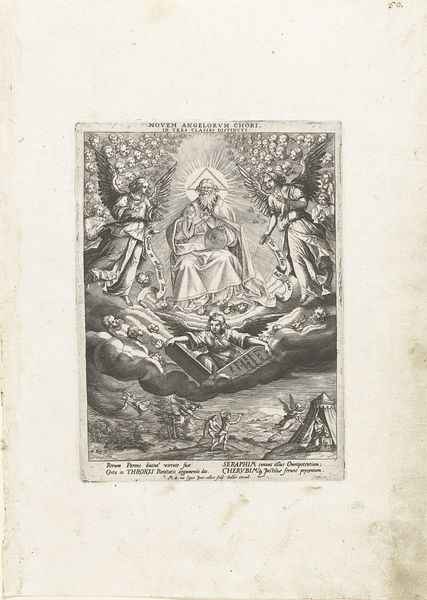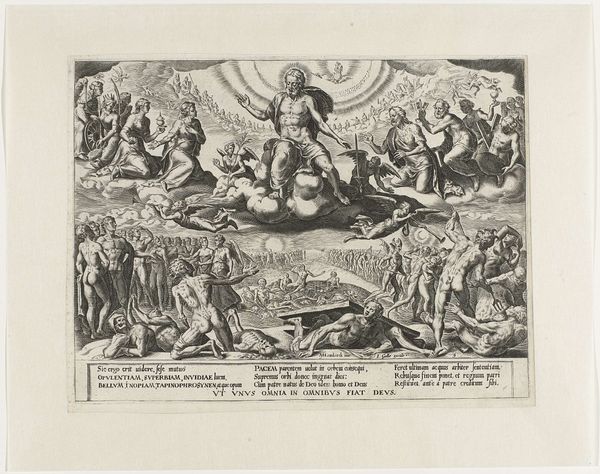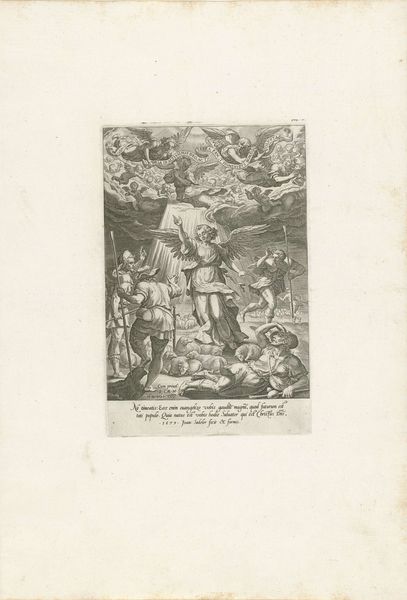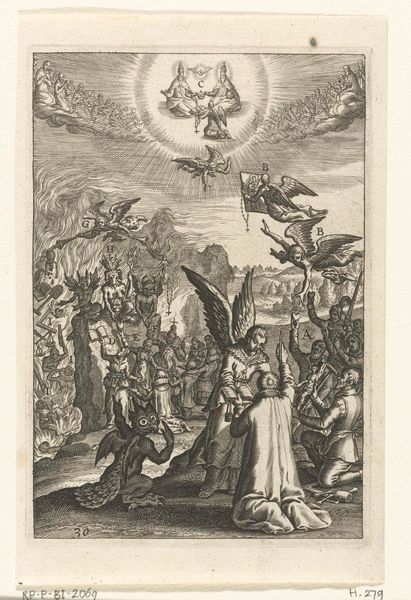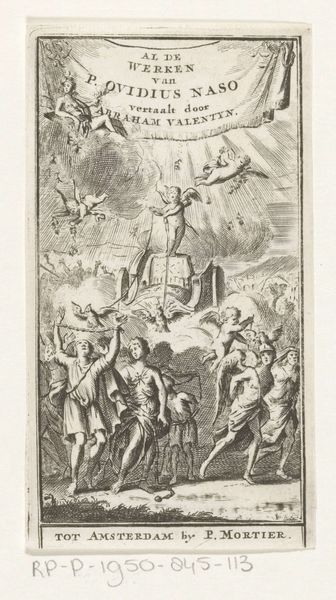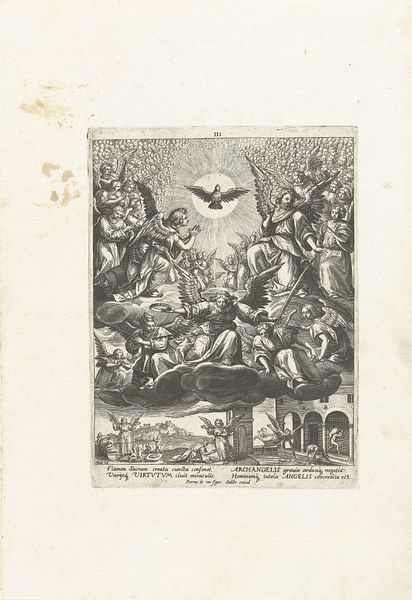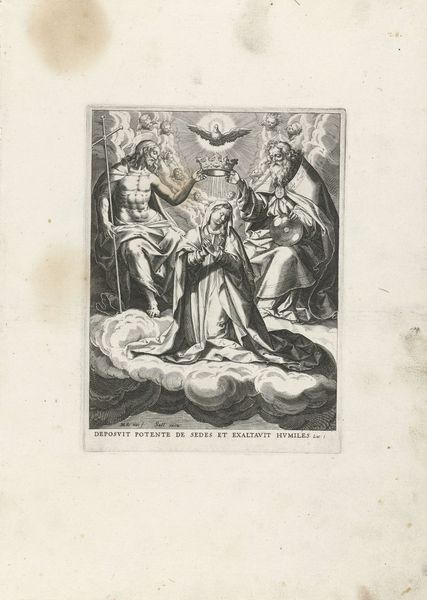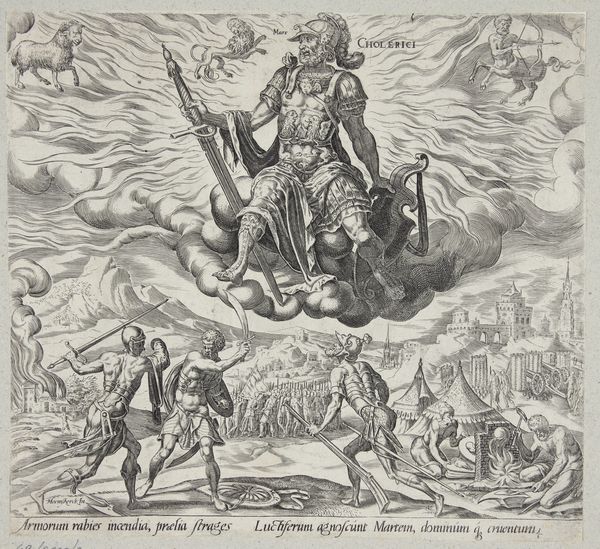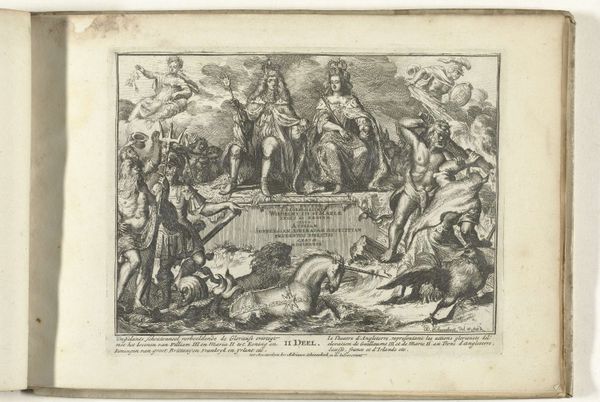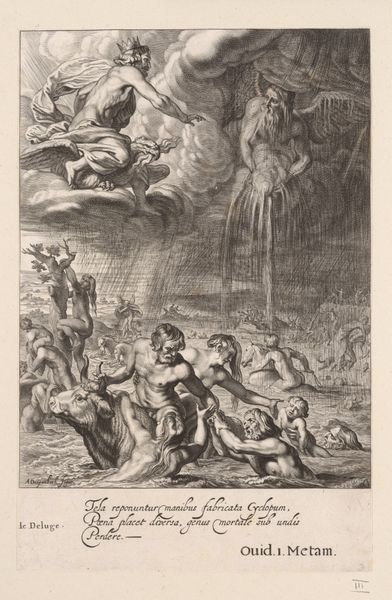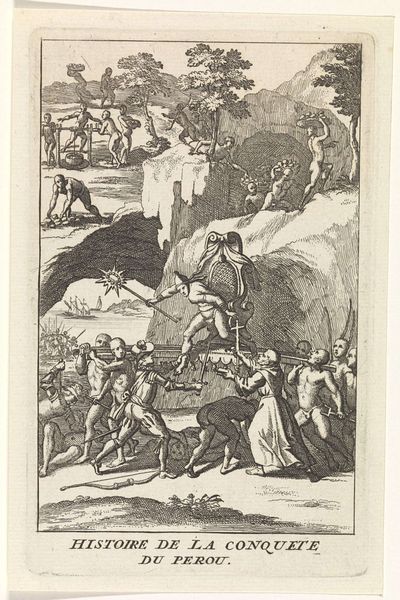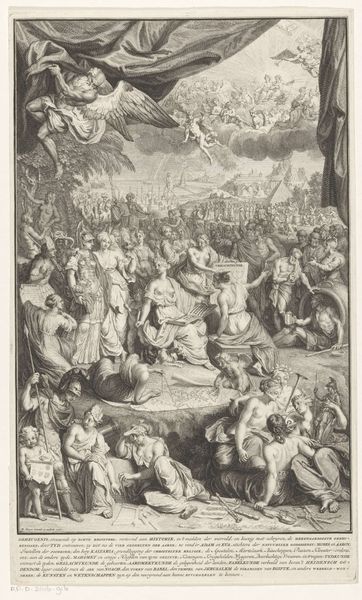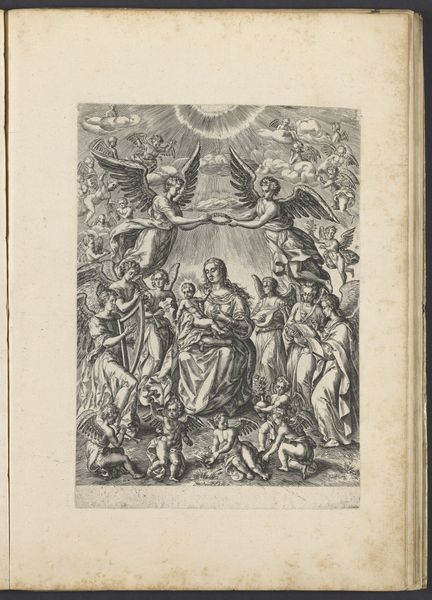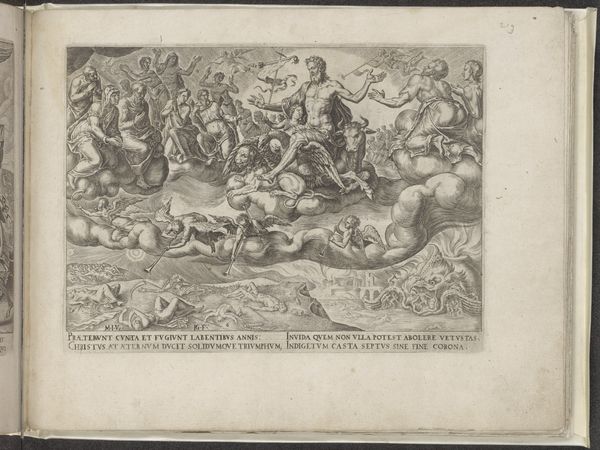
print, intaglio, engraving
#
allegory
#
baroque
# print
#
intaglio
#
old engraving style
#
figuration
#
history-painting
#
engraving
Dimensions: width 154 mm, height 208 mm
Copyright: Rijks Museum: Open Domain
Editor: This is "Christus met de engelen van middelste orde," or "Christ with the Angels of the Middle Order," an engraving by Jan (II) Collaert, likely made between 1576 and 1628. It's a pretty intense image, packed with figures. The contrast between the top and bottom is really striking, but what do you make of the symbolism, particularly considering it’s a print? Curator: Considering this piece, the material conditions of its production are paramount. As an engraving, it's inherently reproducible, designed for broad dissemination. This makes the choice of such complex iconography all the more compelling. We need to think about the economic implications of printmaking and its function within religious movements of the period. What message was the artist and, perhaps more importantly, the publisher, hoping to convey and to what social class? Editor: So you're saying the medium itself—the print—impacts how we understand the message? It's not just about the religious imagery. Curator: Precisely. Think about the labor involved in creating the printing plate, the skill of the engraver translating a potentially painted image into lines and textures, and then the subsequent consumption of this image. This isn’t a unique painting accessible only to the elite. The value lies in its multiplication, making it a tool for propagating specific doctrines and potentially reflecting the patrons' intentions. Editor: That makes sense. It transforms it from just a piece of art to a form of, almost, propaganda, mass produced and distributed. Curator: Yes. Consider too the physical size. Prints were often made to be portable, pasted into books, or pinned up. The everyday person could perhaps feel as if they owned a luxury object for a fraction of the cost. Also, the labor, material (copper) and consumption must have aligned to produce at a sustainable rate. What assumptions and biases might have directed those rates of production? Editor: Wow, I hadn't really thought about all that went into just creating and distributing the artwork itself. It really gives it a new dimension! Curator: Exactly, seeing the art objects not just as aesthetic products, but as products of material culture enriches our understanding greatly.
Comments
No comments
Be the first to comment and join the conversation on the ultimate creative platform.
